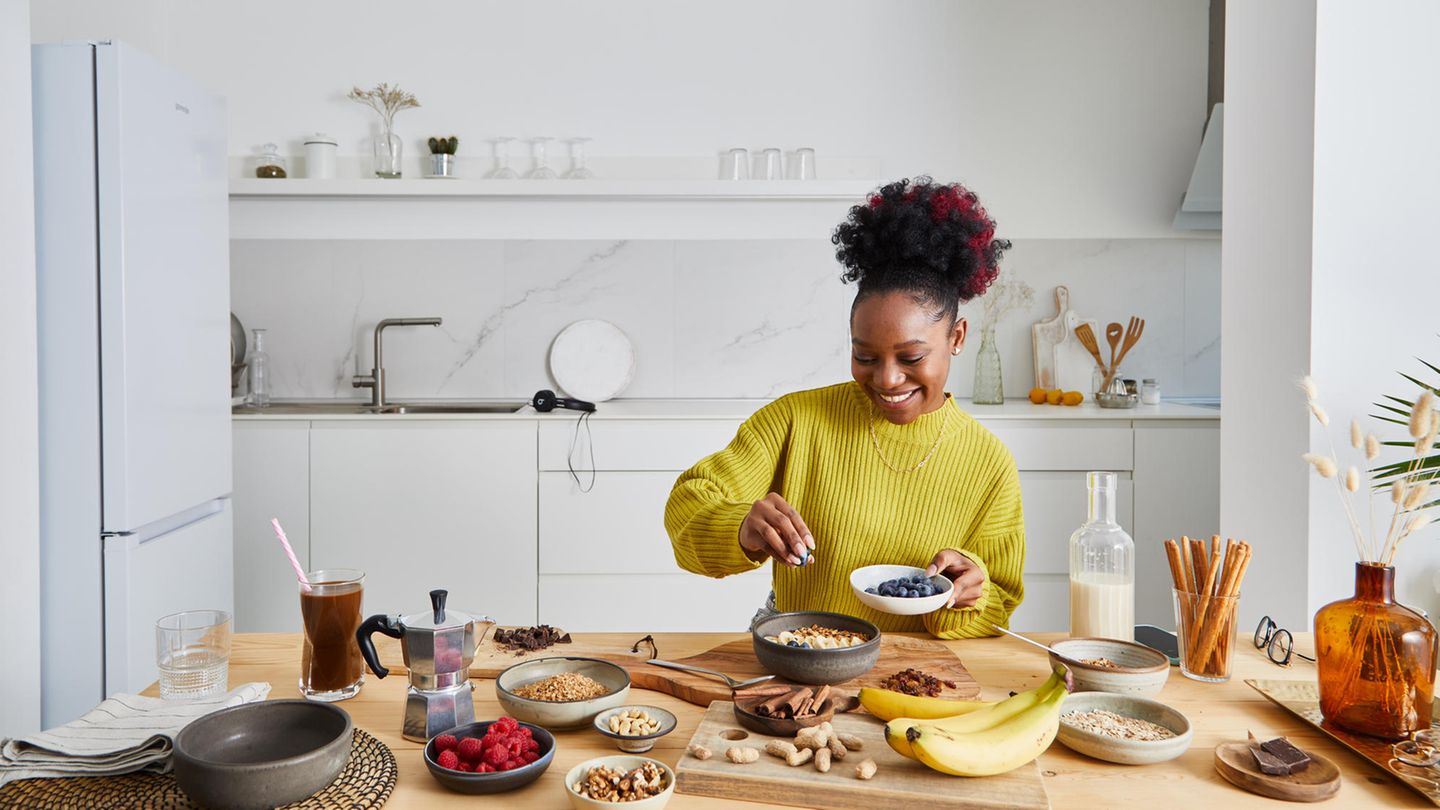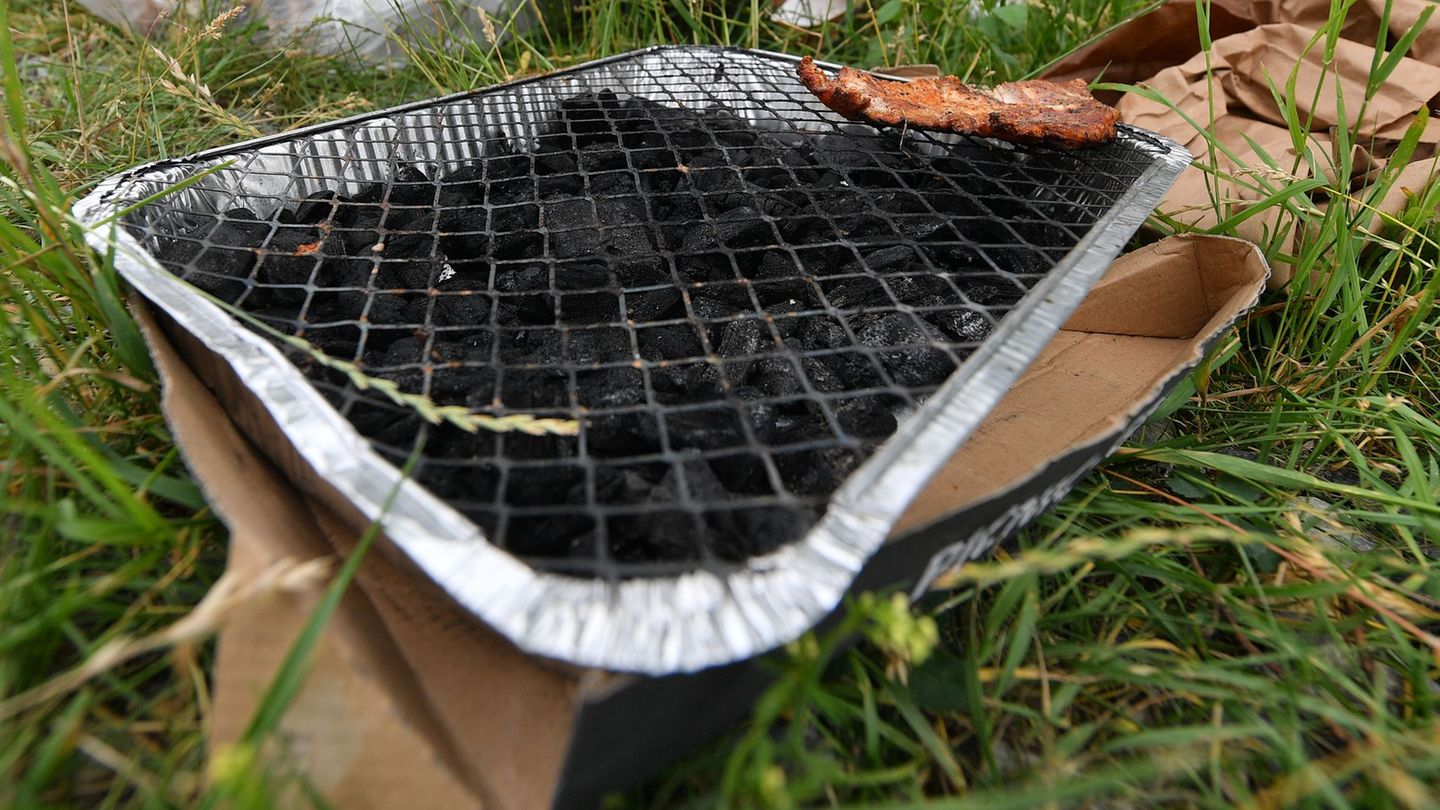A sugar-free diet is good for the body − but it is not easy to maintain. Nutrition expert Maja Biel gives the star helpful and, above all, actionable tips.
It is nothing new that sugar is not necessarily good for the body. Added sugar, also known as free sugar, in particular, causes blood sugar levels to rise quickly, cravings to develop and weight to increase if consumed regularly. A sugar-free diet is intended to avoid these negative effects. Read below to find out how you can manage to avoid sugar, whether you really have to avoid all types of sugar and which recipes you can cook.
What types of sugar are there?
In order to be able to eat sugar-free, the first step is to know what types of sugar there are and which ones can be avoided. Nutritionist Maja Biel explains to star on this: “Sugar means carbohydrates. On the one hand, there is industrial sugar. Here the carbohydrates, i.e. the sugar, are isolated industrially, from sugar beet or sugar cane, for example. This type of sugar is sucrose.” When people talk about sugar, they usually mean this white household sugar.
But there are also more industrially produced isolated types, says the expert. These include glucose, fructose, sucrose. But honey, syrup, fruit juice concentrates and others are also included when we talk about free sugar – that is, the sugar that should be avoided in a sugar-free diet.
“And then there is sugar that occurs naturally in food. For example, fructose in apples. The difference is always that here the sugar is in a combination with other nutrients: vitamin B, folic acid, potassium, for example. Another example would be milk sugar, lactose, which also occurs naturally in milk. It also contains proteins, fat and other nutrients. To keep it simple, I would always differentiate between these two types of sugar: firstly, the natural sugar in natural foods, in combination with other nutrients, and then the isolated sugar, i.e. industrial sugar, so to speak.”
What should I avoid on a sugar-free diet?
“The question of how sugar-free nutrition is interpreted is interesting. For example, there are about a sugar-free diet or stories from some people around us. Most of the time, people are talking about giving up white household sugar, but also things like agave, corn extract, fructose syrup or anything that has been added. Sometimes, however, people just give up white sugar and replace it with honey or something else – which is not so effective.” Sometimes people also like to use dates, although these also contain a lot of concentrated sugar. “I’m not in favor of being completely dogmatic and banning all of that. But you should keep in mind: That’s sugar too.”
Instead of simply replacing white sugar with other types of sugar, Maja Biel recommends something different for a sugar-free diet: “I would definitely continue to recommend fruit because it also contains many other important nutrients: vitamins, minerals, etc. Fruit also has a more natural, lighter sweetness.” This allows you to gradually reduce the level of sweetness.
If you want to stick to a sugar-free diet, it is also important to think about products that contain a lot of sugar, even though they may not taste that sweet. “Something like ketchup or frozen pizza. But also fruit yoghurt, cereal bars, cereal, store-bought smoothies. You might think: ‘Oh, it’s fruit, it’s healthy’. But fresh fruit is the better choice.”
What positive effect can (large-scale) abstinence have?
Those who avoid sugar as much as possible will experience some advantages. The expert also knows this: “Anyone who has avoided sugar for a long time will know that the level of sweetness is reduced and sweet things taste much sweeter than usual afterwards. The desire for them eventually subsides.” Weight loss can also accompany the new diet. “Cravings can decrease. If you previously eat a chocolate bar every now and then in the afternoon, for example, your blood sugar constantly goes up and down and you keep craving more. This doesn’t happen with a sugar-free diet.”
Positive effects can also include being able to concentrate better and having a more stable energy level. “You usually feel more balanced, happier. Depending on how much sugar you have eaten beforehand, it also has a positive effect on the intestinal microbiome, the bacteria, the entire intestinal flora.” The risk of diabetes can also be reduced. As can the risk of tooth decay. “But I have to say, all of this is also possible with sugar in your diet.” It mostly depends on the amount consumed.
For reference: The World Health Organization (WHO) recommends that adults should consume no more than 25 grams of added sugar per day. Anything above this is therefore harmful to health. Excessive consumption of sugar, for example, is considered to be the main driver of the formation of particularly unhealthy belly fat. Avoiding it as much as possible can only be a good thing.
Can a sugar-free diet be problematic?
Eating a completely sugar-free diet has many positive effects. However, the change is often not without problems. Biel explains: “You may have got used to it. The body, the brain and especially the psyche get used to the sugar. If you then suddenly give it up, you may experience small withdrawal symptoms, i.e. an adjustment phase in which you really feel: ‘I can’t stand it, I need something sweet now.'” However, if you eat filling, nutrient-rich meals, these cravings will eventually go away. However, it can take a few days for the body to get used to it. “Some people even get headaches. It’s like a small sugar withdrawal. But the good news is: it gets better and better.”
Recipe ideas
Anyone who wants to try out a sugar-free diet should use foods or recipes that keep you full for a long time. The expert has the following tips: “The best way to start the day is with a filling breakfast. I keep hearing that porridge, for example, simply doesn’t keep you full for long. A filling meal should always contain carbohydrates, protein and fats. So if you want to eat and a little fruit, quark or yoghurt, it will be well-rounded. Or nuts, which also have protein.” The addition of available from brands like nu3, can help keep you full and add a certain sweetness.
At lunchtime, for example, you could have a bowl of rice, but also protein-rich foods, such as chickpeas, fish, tofu, and vegetables. “Vegetables always have a lot of volume but few calories, so they fill the stomach. It’s a perfect combination.” But you usually need a snack in between. “Otherwise, it’s no wonder that when you come home from work starving, you run to the fridge or open the candy drawer.” A good snack could be a handful of with a piece of fruit. “Even with snacks you should make sure that they do not only consist of carbohydrates. A few blueberries and two pieces for example.” In the evening it can be a slice of bread with two fried eggs. “Perhaps with some salad if you can handle that. Or steamed vegetables. And if you still have a craving for something sweet, a yoghurt with a piece of fruit would be a good choice.”
More tips for a sugar-free diet
- A change from one day to the next is usually unrealistic. can help you to first recognize what your diet actually looks like and to determine what you might want to change about it. Every Coke and every piece of chocolate should be recorded. Recording can also help you to find out why you just ate a bar of chocolate, says Maja Biel: “Is that because I’m completely starving? Was it emotional eating? Because I’m so stressed? Is that because I’m sitting alone on the sofa in the evening and feeling lonely? Then you could see what could be a good alternative? A date, a few blueberries and two pieces of dark chocolate?”
- Don’t be too drastic and forbid yourself everything. Sugar should be eaten in moderation and there can be exceptions, such as a birthday. Otherwise, abstinence can be a bit socially restrictive. In addition, complete sugar breaks are helpful in order to reduce sugar levels as much as possible.
- Individual approaches are helpful: If you can’t stand having a bar of chocolate lying around in the cupboard, you can consciously only buy the chocolate bar the next time you go shopping, which you can then eat in its entirety at home.
Sources used: (DDG) / WHO
More information can be found here.
Source: Stern
I’m Caroline, a journalist and author for 24 Hours Worlds. I specialize in health-related news and stories, bringing real-world impact to readers across the globe. With my experience in journalism and writing in both print and online formats, I strive to provide reliable information that resonates with audiences from all walks of life.




